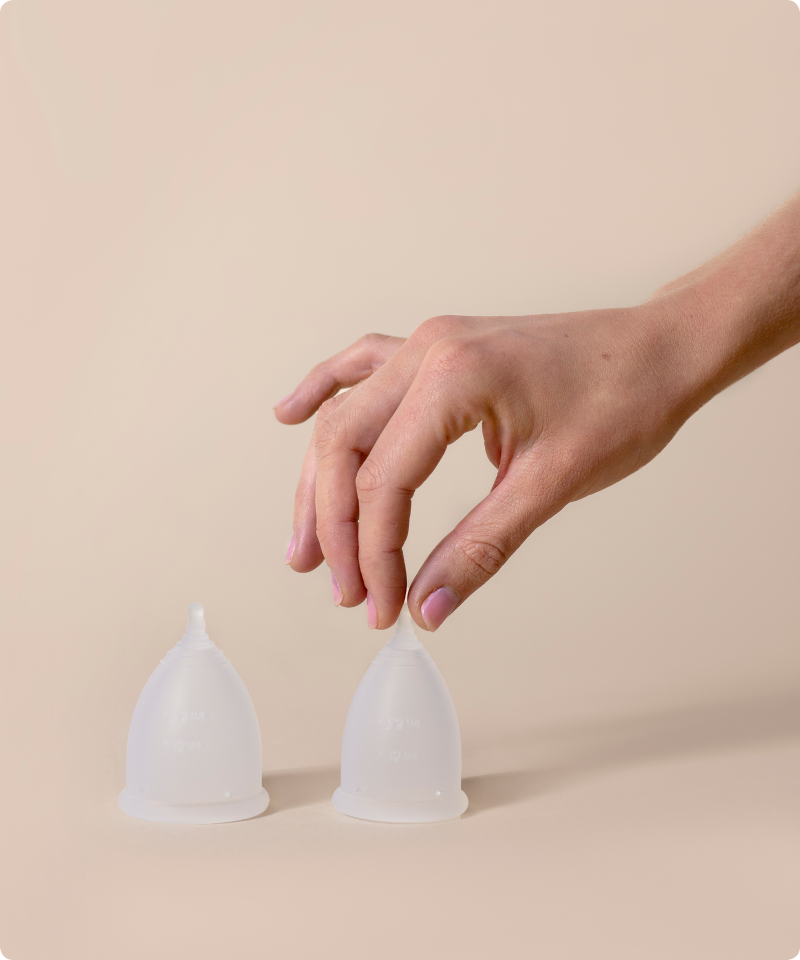Everything you need to know about vaginal discharge
What is vaginal discharge?
Your cervix and vaginal walls secrete fluids and moisture, to keep you clean, hydrated and moisturized. These fluids are extremely important because they also expel bacteria and dead cells from your cervix and vaginal walls. If your vagina were to become too dry, it could turn into a hotspot for fungal infections. The fluid has nowhere else to go but out, ending up in your underwear and leaving those annoying bleached spots, because your vagina and, in turn, also the fluid is pretty acidic. Boom! Vaginal discharge, cervical mucous or white fluid. Every vulva owner deals with it from the moment of the first period to the menopause and it is completely normal.
What is normal discharge?
Normal vaginal discharge contains ‘good’ bacteria like Lactobacillus, which produces lactic acid. This makes your vagina acidic, an environment in which ‘bad’ bacteria can’t survive. Healthy vaginal discharge is milky to translucent and sometimes has a yellowish color. The amount is different for everyone and when it dries in your underwear it could turn a little crumbly. Discharge usually has a slight, not unpleasant odor. Sometimes this odor is a little stronger than normal, but this is due to the ever changing hormone balance.
Different kinds of discharge
Runny and translucent
This is what it’s supposed to look like during ovulation. Sometimes a little more, sometimes a little less. That’s for example related to stress, your cycle or if you’ve been ill. Having a little more is nothing to worry about, it’s completely normal. Before and after your ovulation, your discharge can change a bit more. It can become a little thicker and stiffer. The color also changes to a more white-like color.
Crumbly and white
Crumbly, white discharge in your underwear that looks a bit like cottage cheese and is accompanied by an itchy, burning sensation and pain when urinating, is usually a sign of a fungal infection (candidiasis). Almost every vulva owner has had one and it has an easy fix. There are a couple of tips that could help you prevent a fungal infection. You could also take some over-the-counter medicine to cure it, but prevention is necessary too. If you frequently (more than thrice a year) from a fungal infection, it is a good idea to visit your GP so they can take a culture.
What if your yeast infection doesn't pass
or comes back time and time again?
Read more
If you occasionally find lots of thick white discharge in your underwear that does not itch or burn, then this is quite normal. This white, sometimes crumbly discharge often occurs during the first phase of your cycle.
How much discharge is normal?
The amount and the color of your vaginal discharge can change from time to time. Causes for that are the menstruation cycle, the pill, pregnancy and the perimenopause. In short: hormones. Sex can also influence the amount of white fluid, because the bacteria in your vagina come into contact with someone else’s bacterial flora. Sometimes, your body responds to this by producing more discharge. All of these little fluctuations are proof that it’s healthy down there, nothing to worry about.
What is an abnormal vaginal discharge?
Does your discharge look a little different from described above? It might be an idea to check the list of different types of discharge below. In it, the causes of abnormal vaginal discharge are discussed. They all tell you something about your body and what you can do about it.
Brown or pink discharge
Is your discharge brown or slightly pink? That’s usually caused by your period. It’s not unusual to bleed a little before or after your period. This is called spotting. The blood mixes with your discharge, giving it that pinkish or light brown color. Even if you’re taking the pill, you can get spotting. These periods of bleeding outside the normal menstruation period are caused by hormonal birth control. If this continues to happen, it might be a good idea to go to your GP. You can discuss together if it’s wise to switch to a different type of pill.
Everything you need to know
about brown discharge
Read more
Brown, smelly discharge with abdominal pain and/or itchiness
Is your discharge a darker brown, does it smell, does your stomach hurt and/or itch or do you have continuous brown/pink slimy discharge without getting your period? It might be a cervical lesion or an infection and worth getting checked out by your GP. An infection is incredibly annoying and should be treated as soon as possible.
Green or yellow
Green or yellow discharge can mean several different things. Do you have pelvic pains, do you have a fever and does it hurt when you have sex? You might be dealing with pelvic inflammatory disease. You can get such an infection when bacteria spreads from the mucosa of the fallopian tubes, ovaries, or uterus. Sometimes it’s caused by an STI, but also because of IUD placement or childbirth.
If you have green or yellow discharge in combination with a burning sensation while peeing, it might be a bladder infection or a UTI. Yellow discharge is also common in combination with chlamydia. Is the green or yellow discharge particularly thick? Let your GP check if you have gonorrhea.
The most common STIs
Read more
Yellowy green, frothy and with a strong odor
This could be a trich infection, a parasite in your vagina, urethra or bladder caused by unprotective sex. Trichomoniasis, or trich, starts with frothy vaginal discharge that gradually turns more yellow and then greener, thicker and slimier. Your discharge smells and sometimes (but definitely not always!) you can have an itchy vagina with swollen, red labia. Fortunately, trich is easily treated with the right antibiotics. Your (former) sex partners will probably appreciate it if you give them a head’s up if you caught this STI though.
Gray with a fishy odor
Does your coochie smell like an indoor fish market with no air conditioning and does your discharge look slightly gray? It’s likely an overgrowth of bacteria in your vagina, so called bacterial vaginosis. You get bacterial vaginosis when the pH balance of your vagina is thrown off, which then causes the ‘good’ bacteria in your body to increase. This is what causes the fishy vaginal smell. No need to panic, it’s fairly easy to fix bacterial vaginosis with antibiotics you can get from your GP. Do you prefer a natural treatment? Read this article discussing all the tips and natural remedies.
When should I go to the doctor?
Do you have the idea that something isn't right about your discharge, or do you suddenly have a lot more discharge than normal that looks different and/or has a strong smell? Contact your GP or gynecologist. They will give you a pelvic exam, which includes testing your vaginal discharge with a cotton swab (pap smear) and getting that sample tested to check microscopically what kind of vaginal discharge it is. In most cases, you will get a cream, salve, tablet or vaginal suppository. This could also be antibiotics. You can also look for a natural solution in the form of products with tea tree oil or probiotics but make sure you know what's going on first!
Want to know more about your body and cycle? Sign up for our cycle community.


























